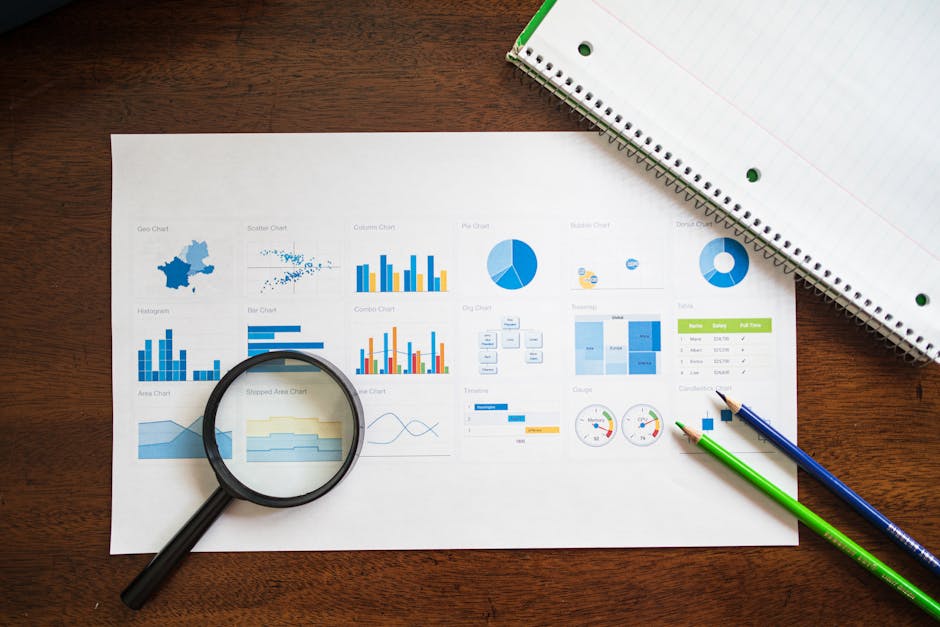The Importance of Data Visualization in Reporting

Data visualization has revolutionized the presentation and comprehension of information across sectors. By converting data sets into visual forms it simplifies interpretation improves decision making and facilitates more effective sharing of insights. Whether in the realm of business analytics or academic exploration data visualization serves a function in reporting and analysis ensuring that data backed conclusions are accessible and actionable.
The Significance of Data Visualization in Enhancing Comprehension
Data visualization streamlines the understanding of intricate data sets. Visual aids like charts, graphs and maps allow for identification of patterns, trends and outliers. This immediate grasp is crucial in environments where prompt decisions based on data insightsre necessary.
A research study featured in the Harvard Business Review reveals that humans process information 60,000 times faster than text. This rapid processing ability indicates that visual representations of data can lead to more well informed decision making.
- Charts and Graphs
- Heatmaps
- Infographics
- Dashboards
Enhancing Communication Through Visual Representation
Effective communication is vital in both business settings and academia. Data visualization assists, in conveying information to diverse audiences with varying levels of expertise.
When sharing financial updates with investors or simplifying scientific discoveries for the general public visual aids play a crucial role in bridging the gap between raw data and comprehensive comprehension. Visual tools like dashboards allow for real time monitoring of performance indicators (KPIs). For example interactive dashboards on platforms like Tableau empower users to delve into data details while keeping an eye on the big picture (tableau.com).
Supporting Data Driven Decision Making
Businesses heavily rely on data driven decision making processes for strategic planning and operational efficiency. Data visualization plays a role in this by offering clear and concise insights extracted from intricate datasets. By representing metrics and KPIs organizations can track performance, spot opportunities for enhancement and make well informed decisions.
The use of aids such as scatter plots assists in recognizing correlations between different variables. For instance a scatter plot can unveil the connection between marketing expenses and sales revenue aiding in budget allocation decisions.
Historical Background of Data Visualization
The concept of data visualization is not a development; its origins date back centuries. Early instances include John Snows cholera map from 1854 which utilized data to pinpoint the origin of an outbreak in London. These historical examples underscore the significance of visual tools, in interpreting data.
| Year | Event | Description |
|---|---|---|
| 1786 | William Playfair's Charts | Introduction of line, bar, and pie charts. |
| 1854 | John Snow's Cholera Map | Use of spatial data to track disease outbreak. |
| 1983 | Edward Tufte's Book "The Visual Display of Quantitative Information" | Pioneering work on the principles of information design. |
| 2000s | Rise of Interactive Dashboards | Evolving technology enabling real-time data interaction. |
Looking ahead the future of data visualization holds promise for advanced tools and techniques. Artificial intelligence (AI) and machine learning are expected to drive the development of analytics models with deeper insights through visual representation. These technologies will automate generation tailored to individual user needs.
One emerging trend is the use of augmented reality (AR) for data experiences. AR enables users to engage with visualizations overlaid on their physical surroundings offering a unique approach to exploring intricate datasets.
The role of data visualization in reporting is crucial as it simplifies datasets into easily understandable visuals. This ability enhances communication, across fields supports informed decision making by presenting clear insights and carries a valuable historical context highlighting its significance.
As technology progresses the sophistication and usefulness of tools will also improve, promising to have a significant impact on how we interpret and utilize data.
The continuous advancement in this field is making progress in enhancing our ability to comprehend and act on information effectively. Embracing these innovations will undoubtedly result in outcomes across various sectors.
Key Guidelines for Effective Data Visualization
Data visualization serves as a tool but its effectiveness greatly relies on how it is implemented. To enhance the impact of your visualizations and ensure they convey your data clearly and accurately adhere to these practices;
1. Select the Appropriate Visualization Type
The choice of visualization should be based on the nature of your data and the message you aim to deliver. Here are some common types of visualizations along with their uses;
- Bar Charts: Ideal for comparing quantities across different categories.
- Line Graphs: Useful for illustrating trends over time.
- Pie Charts: Best for showcasing proportions within a whole.
- Scatter Plots: Great for identifying relationships between two variables.
- Heatmaps: Effective, for depicting data density or variations across a matrix.
2. Simplify Complex Data
Avoid overwhelming your audience with an excess of information all at once. Break down data sets into simpler visuals that are easier to grasp. Use grouping to emphasize insights while retaining key details.
3. Maintain consistent and clear labels
Make sure all axes, legends and data points have labels. Using labeling helps users grasp the information quickly. Avoid using terms unless your audience is well versed in them.
4. Choose appropriate color schemes
Colors can improve the readability of visualizations but they can also lead to confusion if not used correctly. Stick to a color scheme use contrasting colors to distinguish data points and be considerate of colorblind friendly palettes.
5. Add context and annotations
Enhance your visualizations by including titles, captions and annotations as needed. These elements assist viewers in interpreting the data. Emphasize key insights. For instance you can draw attention to peaks or drops in a line graph with brief explanatory notes.
6. Ensure inclusivity
Inclusivity is vital for ensuring that a broader audience can effectively use data visualizations. This involves considering screen readers providing text descriptions for visuals and ensuring that color choices are distinguishable for those, with visual impairments.
7. Test your visualizations
Before finalizing your visualizations conduct tests with a sample audience to discover any problems or areas that could be enhanced. Feedback can play a role in improving your visuals to better cater to the needs and expectations of your target audience.
By following these guidelines you can develop data visualizations that not only look good but also effectively convey complex information with clarity and precision. As technology progresses keeping up to date with the trends and tools in data visualization will enhance your capacity to transform data into valuable insights.
Further Reading
For those keen on delving into the realm of data visualization you may want to explore the following resources;
- Tableau: A prominent platform known for its interactive data visualization capabilities.
- Harvard Business Review: Articles discussing how data visualization influences decision making in business.
- Gartner: Insights on emerging technologies such as augmented reality within data visualization.
- Edward Tuftes "The Visual Display of Quantitative Information": A text outlining key principles of information design.
The field of data visualization is constantly evolving, offering opportunities, for individuals who master its blend of art and science. By learning and implementing best practices you can unleash the full potential of visual tools to facilitate better comprehension and more informed decision making.
